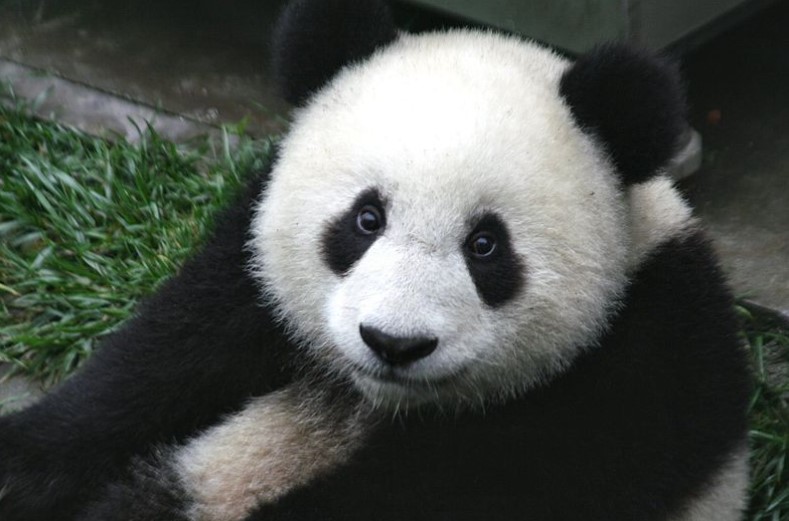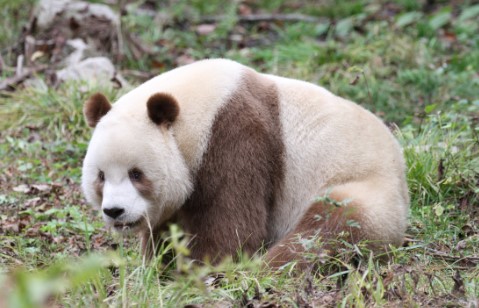



The giant panda is a type of bear that is native to China. They are known for their distinctive black and white markings, as well as their gentle temperament. Pandas are a vulnerable species, with only around 1,800 left in the wild. They primarily eat bamboo, but will also consume other vegetation and small animals if necessary. Pandas are a popular animal in zoos around the world, and many conservation efforts are underway to protect them in the wild.
Giant pandas have black fur on their ears, eye patches, limbs, and shoulders. The rest is white. Its coat mainly serves as camouflage in winter and summer. In winter, the white parts are said to blend in with the snow while in summer, the black parts are used to blend in with the shade. The giant panda's thick, woolly coat keeps it warm in the cool forests of its habitat. It has five fingers and an opposable thumb that it uses to grasp bamboo. There is also a rare subspecies of panda called the Qinling panda which has brown patches and a smaller skull.
Giant pandas spend their lives mostly roaming and eating in the bamboo forests. They are generally solitary. They only come together to mate when a female raises her cubs. Pandas communicate through vocalization and scent marking. They can climb and take shelter in hollow trees or rock crevices but do not establish permanent dens which means they don’t hibernate. Though the panda is often assumed to be docile, it has been known to attack humans, presumably out of irritation rather than aggression.
Giant pandas eat mostly bamboo. In fact, 99% of their diet is on bamboo. Although it mostly eats bamboo, it will eat meat, fish, and eggs when available.
The Qinling panda is a subspecies of giant panda. It was discovered in the 1960s, but was not recognized as a subspecies until 2005. Besides the nominate subspecies, it was the first subspecies of the giant panda to be recognized. It differs from the more familiar nominate subspecies by its smaller skull and dark brown and light brown fur, and its smaller size. Its eye spots are under the lower lid, instead of around the eyes. Most Qinling pandas are around the same size as a giant pandas, growing to 1.2–1.8 m in length and 70–80 cm at shoulder height. The males of the species are heavier than females, weighing roughly 60–190 kg whereas females are likely to weigh 75–125 kg. It lives in the Qinling Mountains at elevations of 1,300-3,300 m above sea level.
Pandas are going extinct everywhere in China. As the human population grows, their habitats are destroyed to make room for buildings and farmland. Habitat loss is the main reason why pandas are going endangered. Many zoos around the world are trying to help save pandas by breeding them and releasing them back to China.